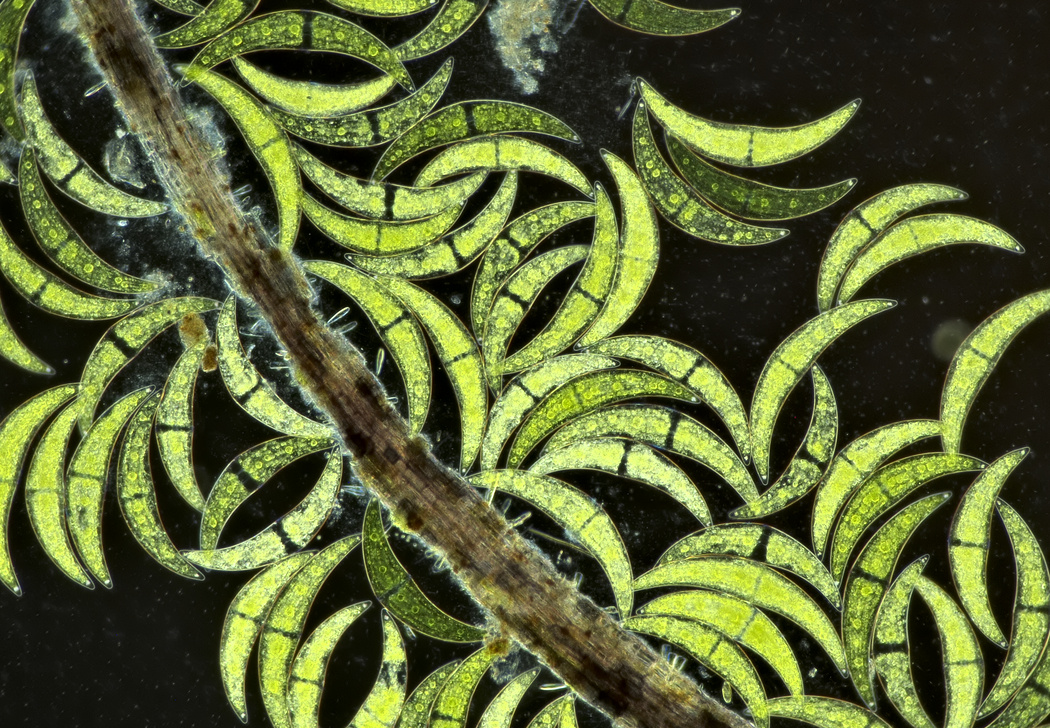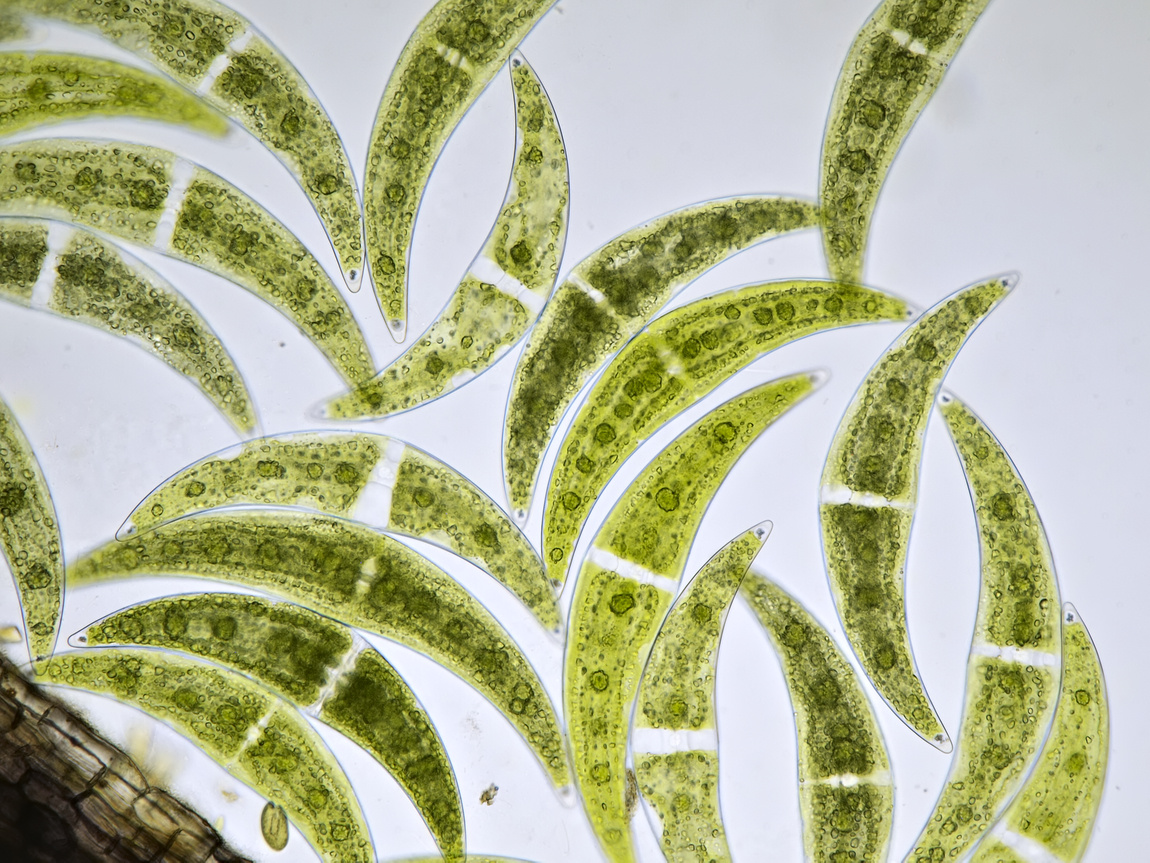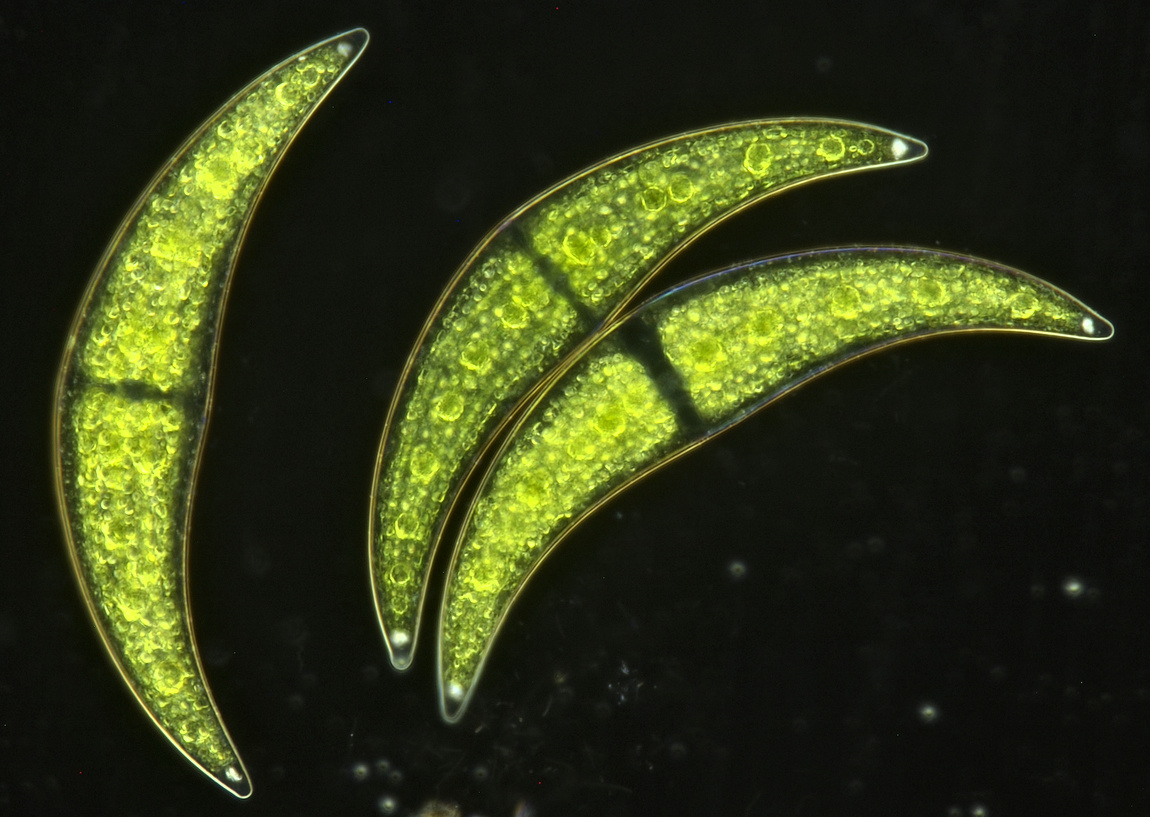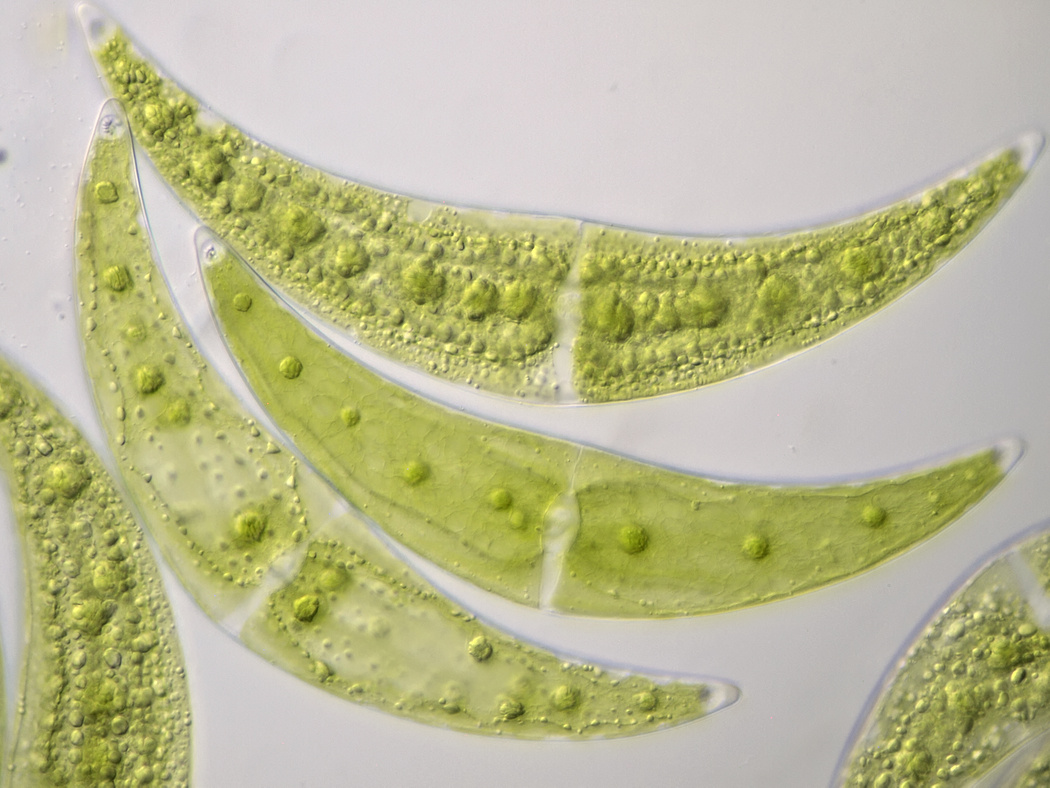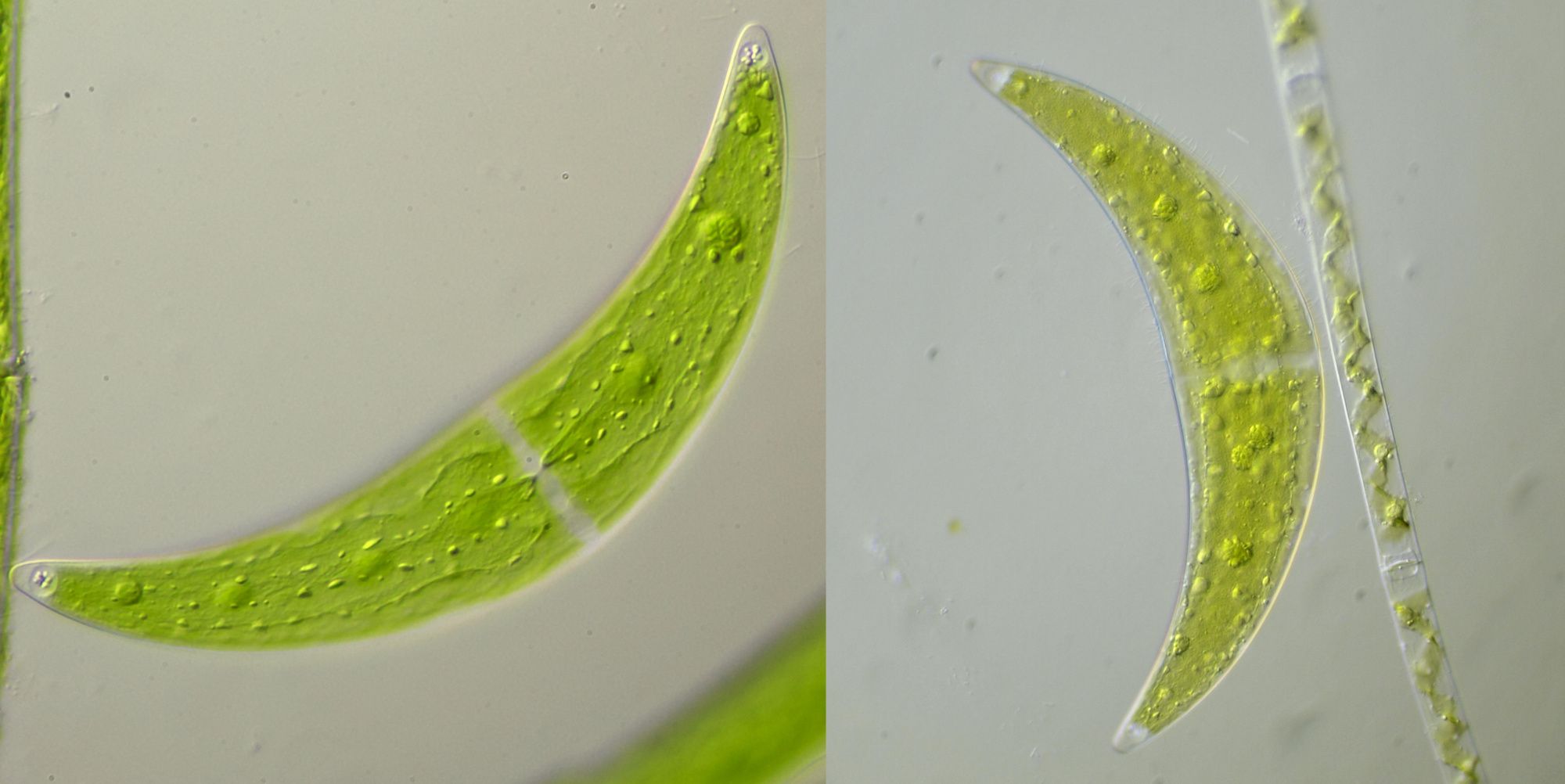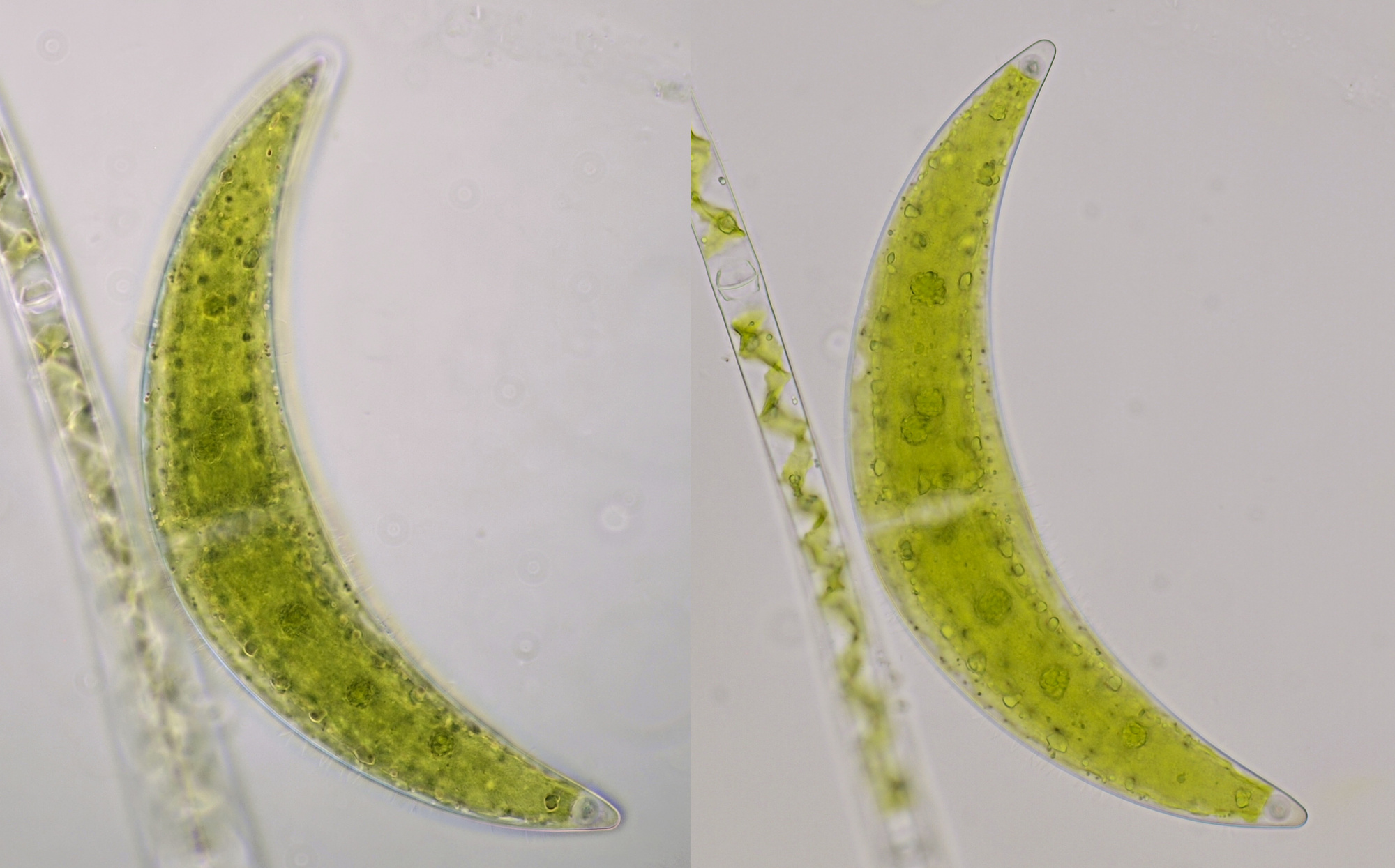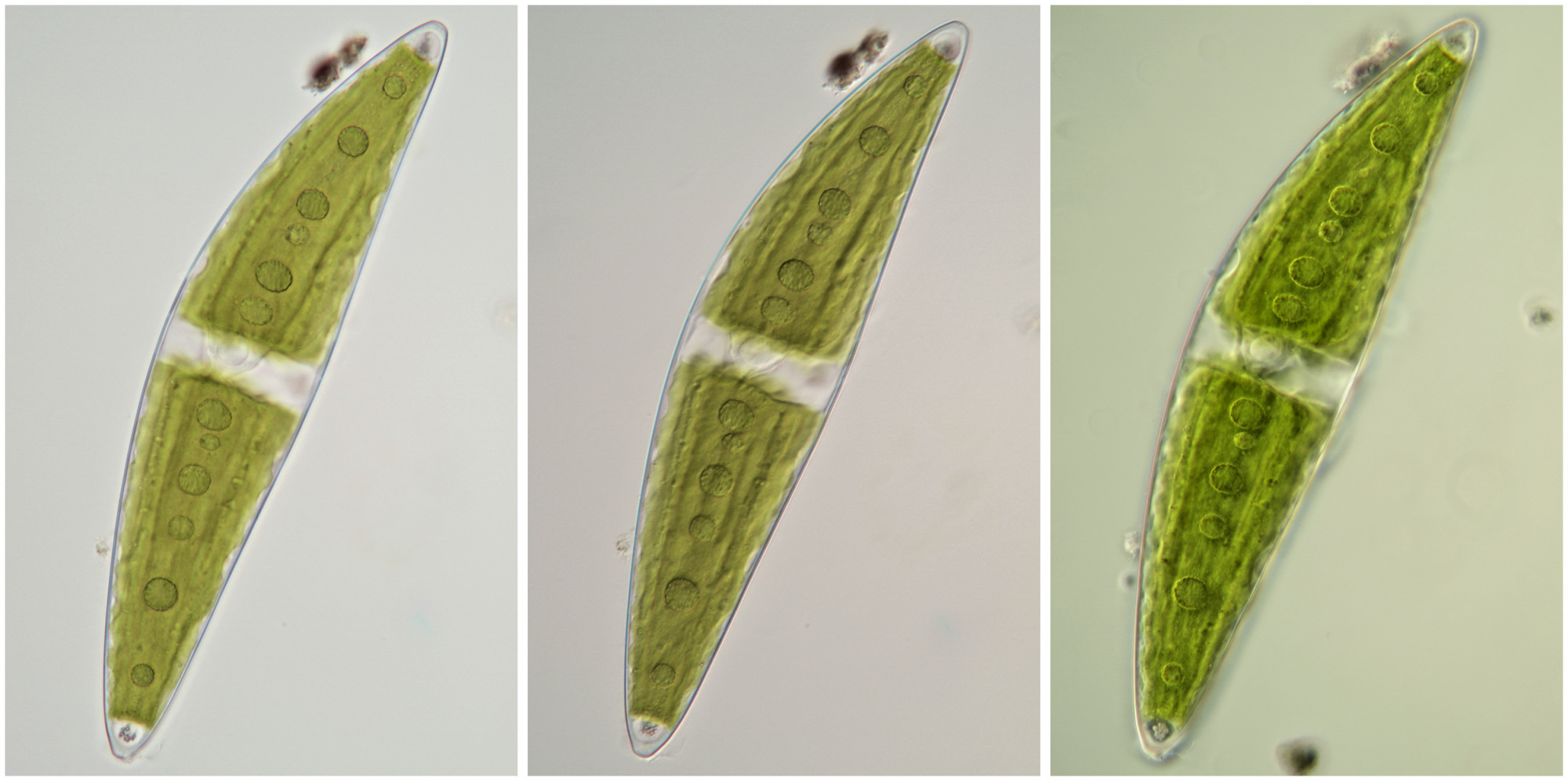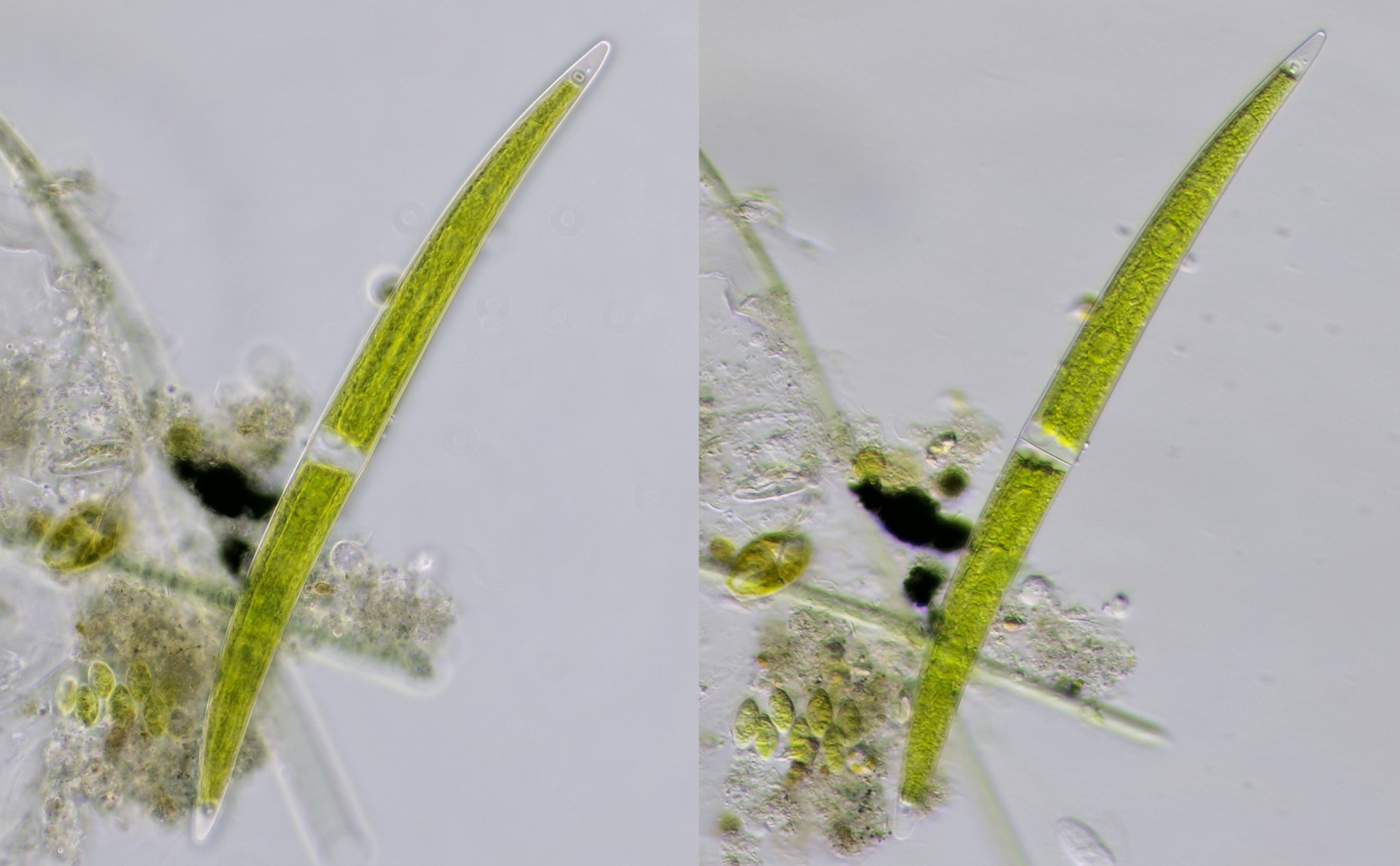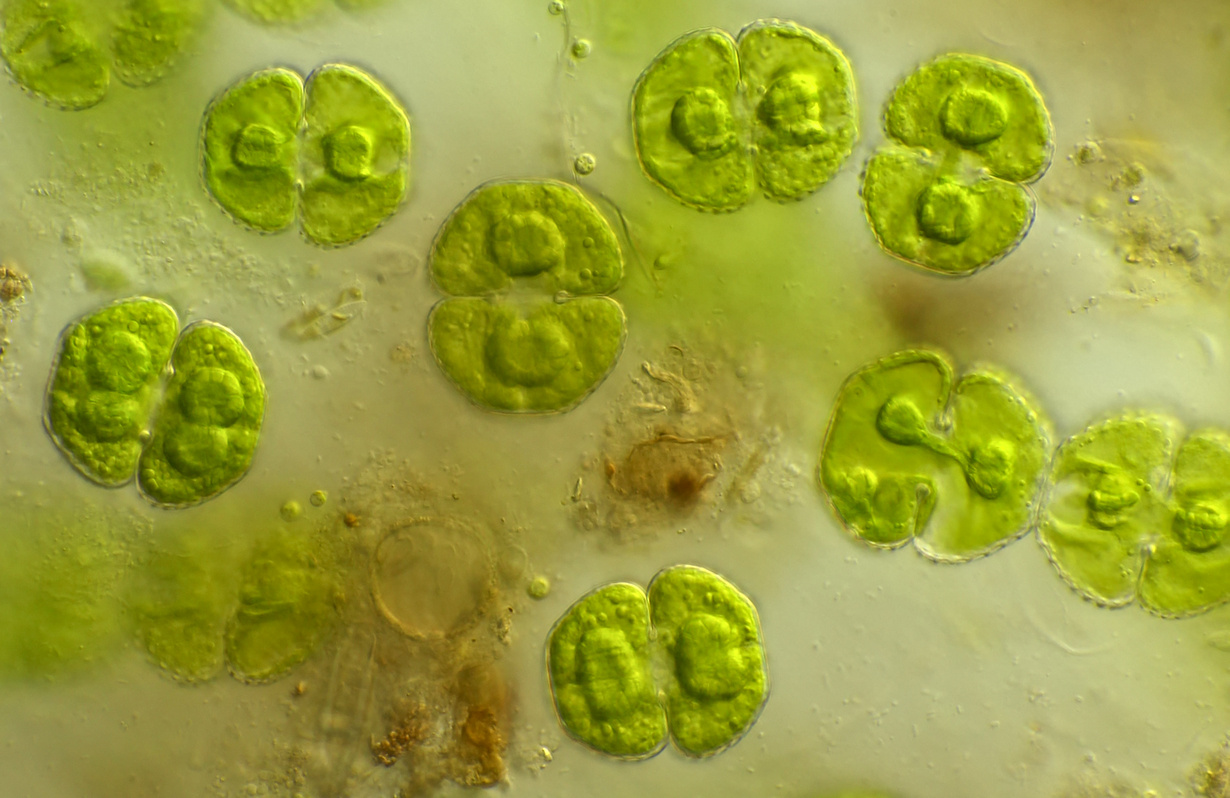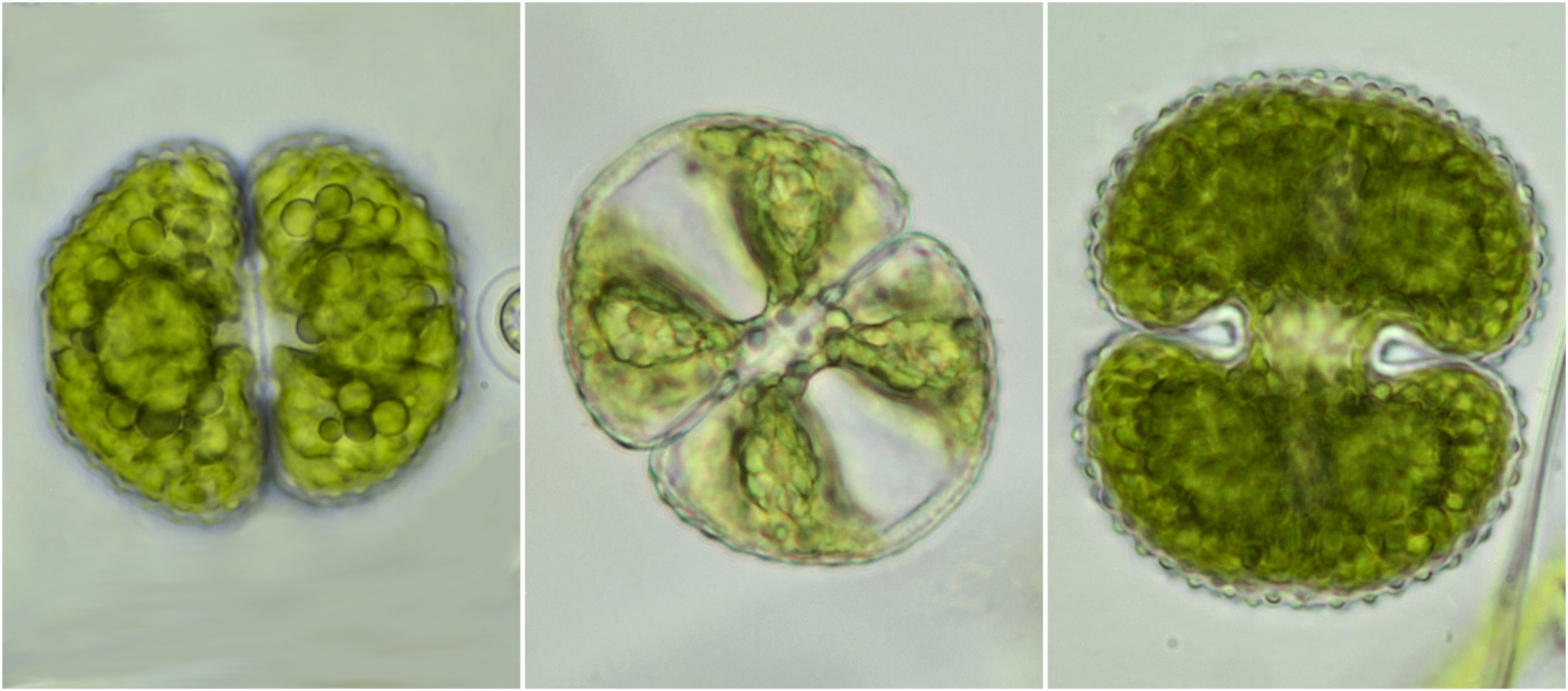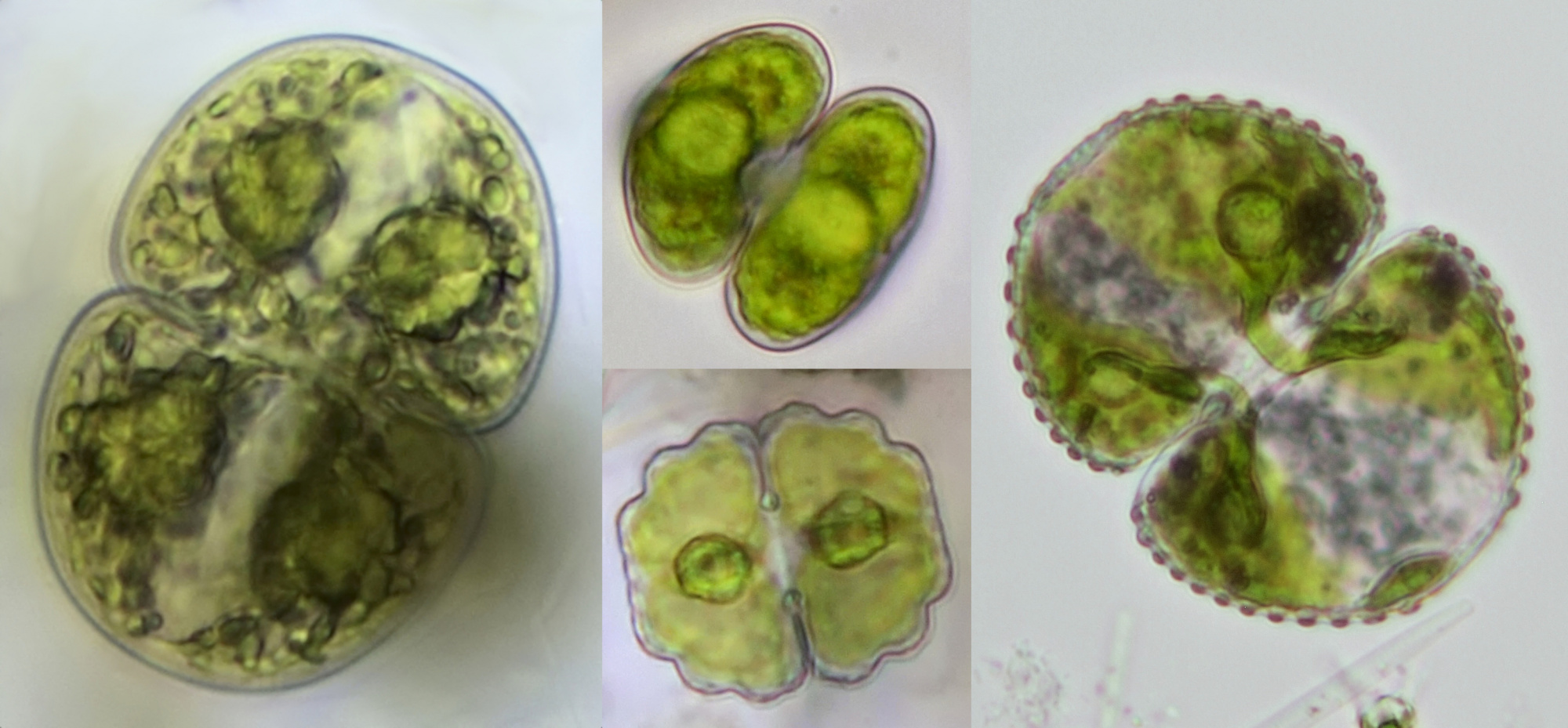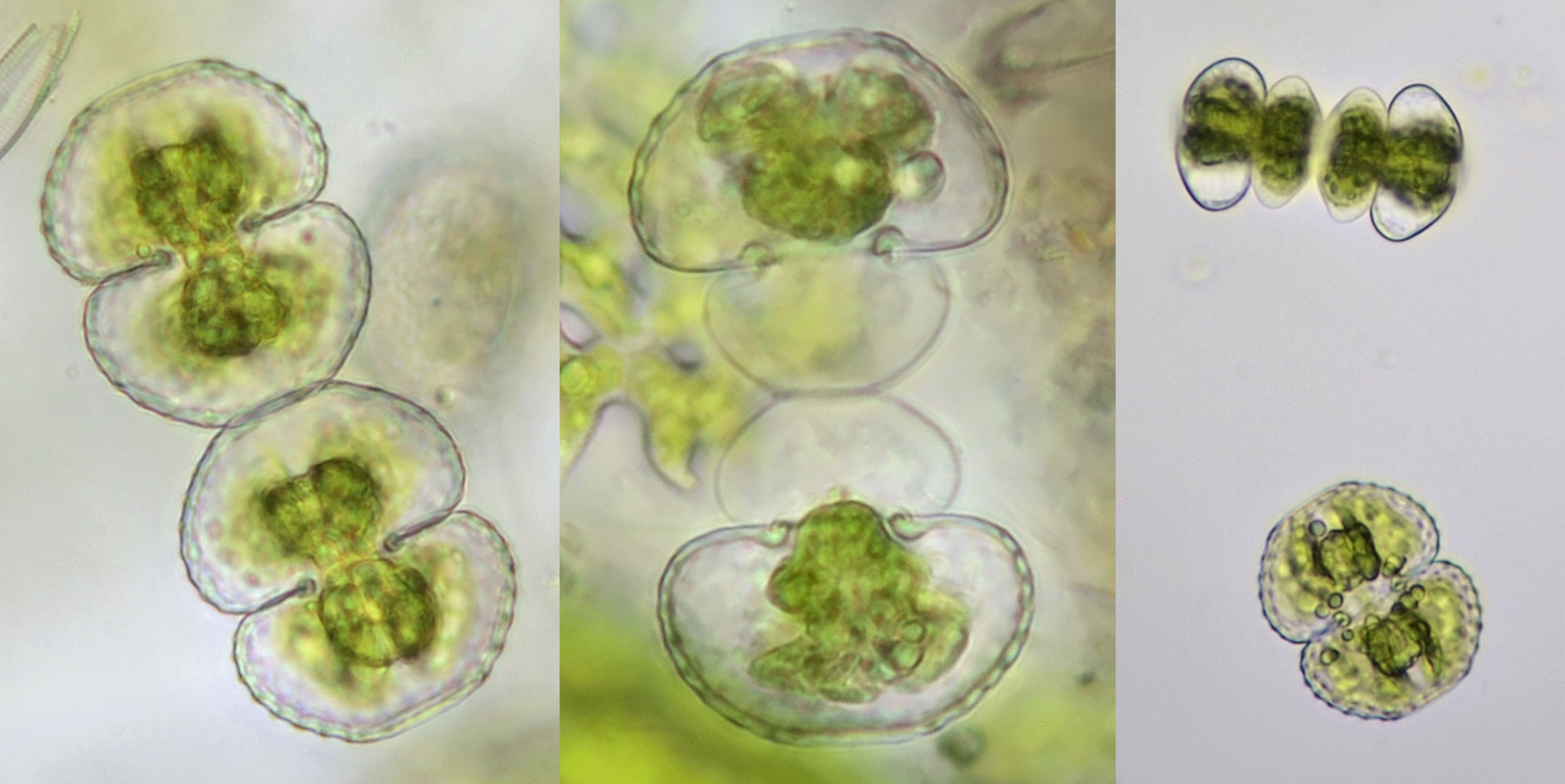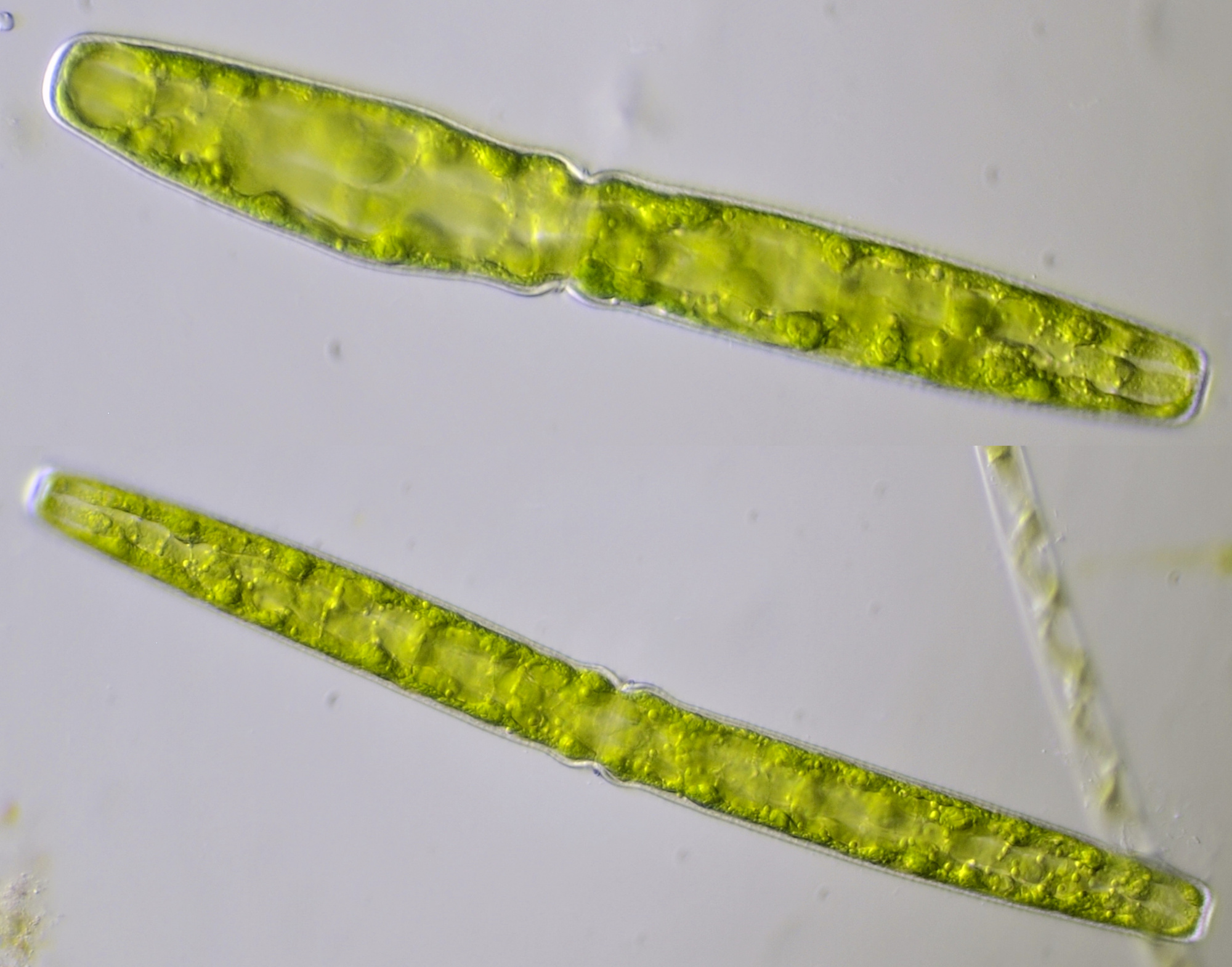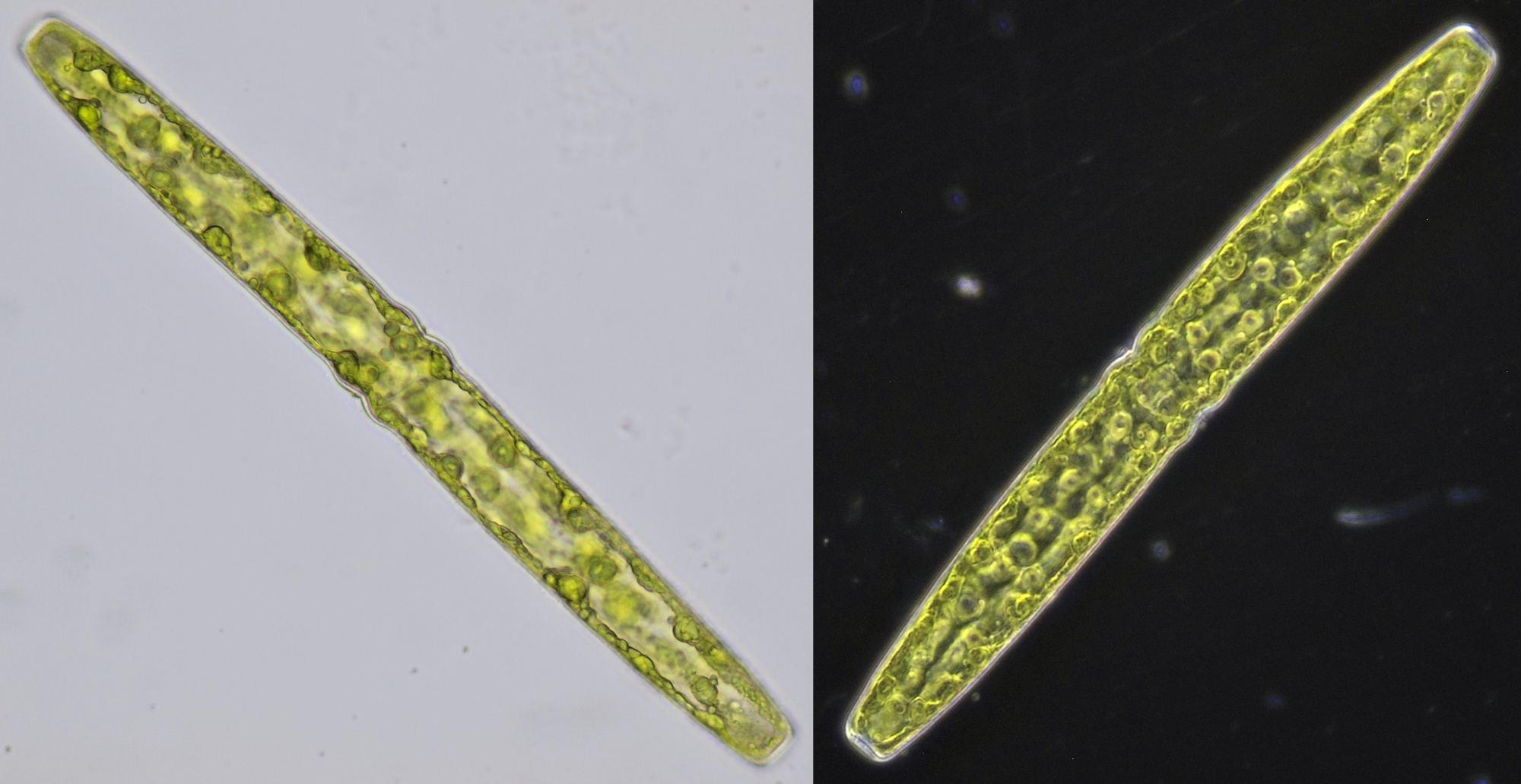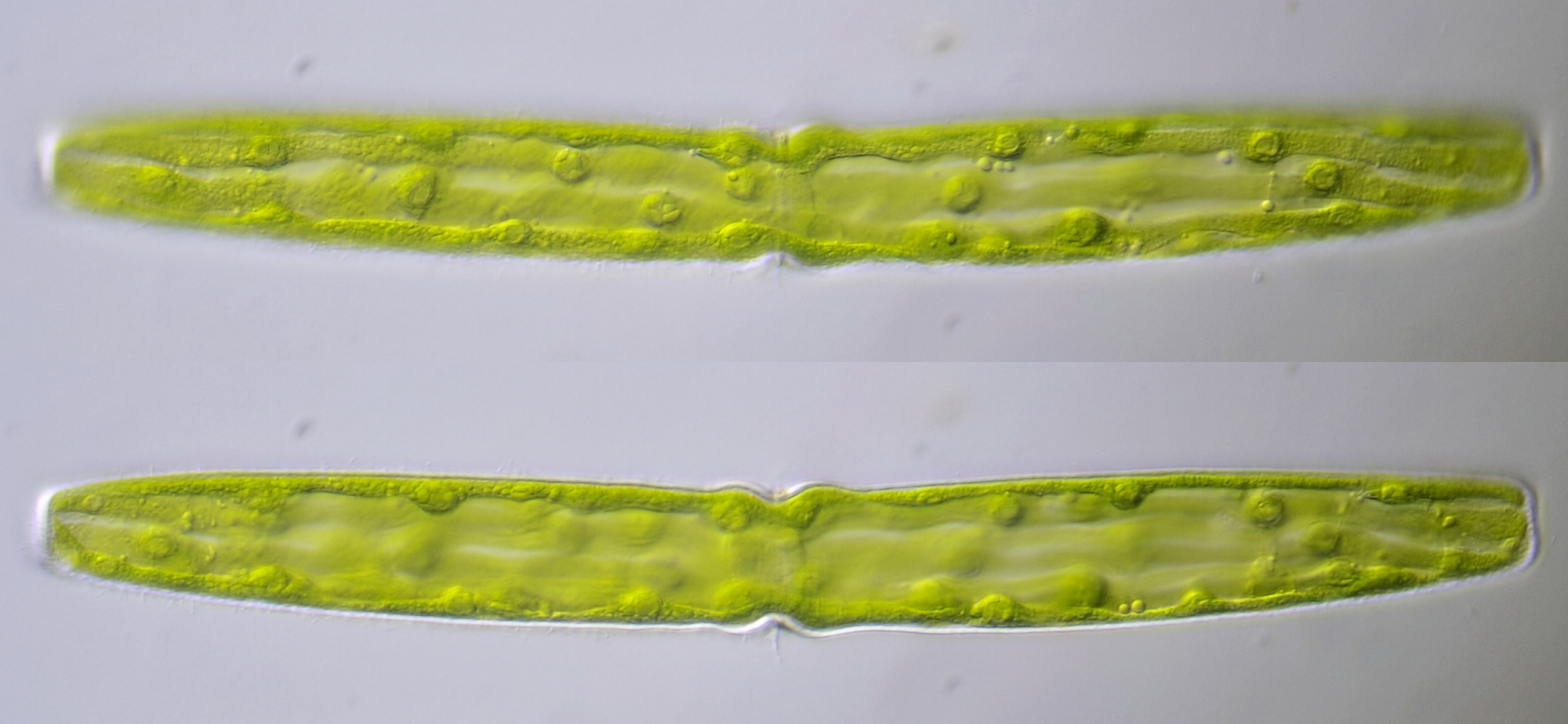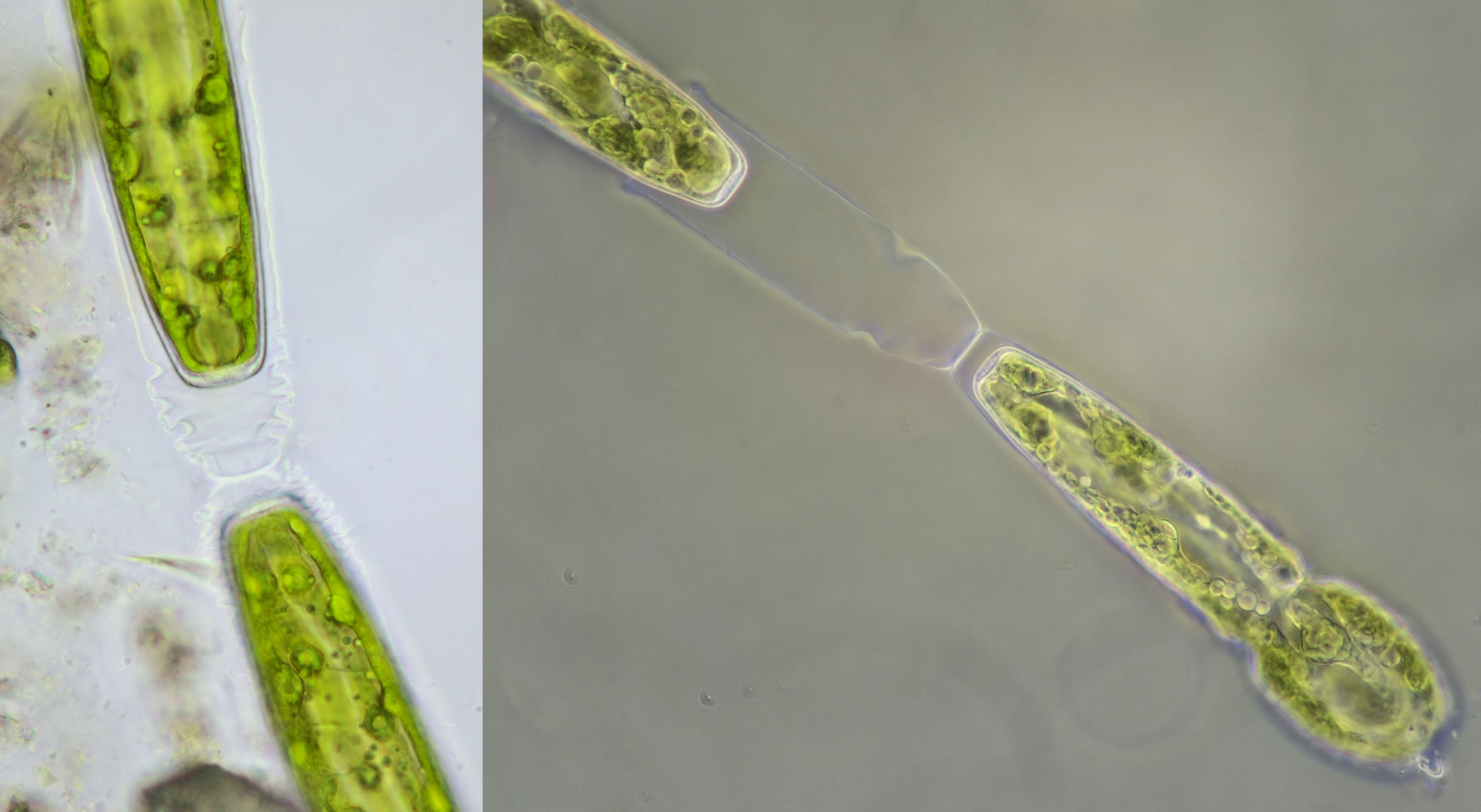
Introduction
Desmids (Desmidiaceae) are a group of mainly unicellular green algae. These algae include for example Closterium, Cosmarium and Pleurotaenium, of which the first two are particularly common in slightly polluted (nutrient-poor or oligotrophic) fresh waters. The cell walls of desmids consist of several layers, the outermost of which is formed by pectin. Mobility is made possible by the secretion of pectin. Barium sulphate (BaSO4) crystals often occur in the cells of desmids, these are particularly visible in Closterium.
Closterium
This alga stands out because of its typical crescent shape. The length of the cells varies from very small (approx. 25 μm) to almost 1 mm. When Closterium is observed through the microscope, it is noticeable that the cells are not completely immobile, they make a 'crawling' movement and can therefore move. The movement is made possible by the secretion of mucilaginous pectin. At the cell ends, groups of barium sulphate crystals are often visible and these crystals swing up and down due to Brownian movement. The following photos were taken from specimens in a sample from my pond where at that moment Closterium appeared to be present en masse.
Accumulation of Closterium around a dead plant remnant. Photographed in darkfield illumination with Carl Zeiss Neofluar 6.3/0.20.
Closterium photographed in brightfield with CZJ objective Apo 16/0.40.
Closterium photographed in darkfield with CZJ objective Apo 16/0.40.
Closterium photographed with oblique illumination and Carl Zeiss objective 40/0.65.
Closterium photographed in oblique lighting with a Zeiss-Winkel 25/0.45 objective. In the left photo the small crystals at the ends of the cell are clearly visible.
Closterium, photographed with annular illumination (left) and brightfield illumination (right). Objective: Leitz Pl Apo 25/0.65.
Besides my pond I also took samples from various ditches and rivers and the following photos were taken from specimens found in these sources.
Closterium from a sample from the river Maas near Kessel (Limburg, Netherlands). Photographed in bright field (left), oblique illumination (middle) and annular illumination (right). In the middle of the alga the nucleus is visible. Objective: Leitz Planapo 25/0.65.
Closterium from a ditch in Voorburg (Netherlands), photographed with annular illumination (left) and oblique illumination (right). Objective: Leitz Pl Apo 25/0.65.
Cosmarium
A typical characteristic of desmids is that the cells consist of two halves and this is very clearly visible in Cosmarium. The cells of Cosmarium can have different shapes and the length varies from 10 - 200 μm.
Cosmarium from a pond in the garden park Nieuw-Vredelust, photographed with oblique lighting. Objective: Carl Zeiss Apo 40/1.0.
Cosmarium, photographed in brightfield. Left: Carl Zeiss Neofluar 40/0.75. Middle and right: Zeiss-Winkel 40/0.65.
Cosmarium photographed in brightfield. Left: Zeiss-Winkel 25/0.45. Middle: Zeiss-Winkel 40/0.65. Right: Leitz 25/0.50.
Cosmarium with some dividing stages (left, middle and upper right). Photographed in brightfield with Zeiss-Winkel 40/0.65 and Zeiss-Winkel 25/0.45 respectively.
Pleurotaenium
Pleurotaenium is an elongated rod-shaped alga consisting of 2 cell halves with bilateral symmetry. The length varies from 250 - 900 μm.
Pleurotaenium from my pond photographed with oblique illumination. Objective: Zeiss-Winkel 25/0.45.
Pleurotaenium, photographed in brightfield illumination with Euromex 40/0.65 (left) and in darkfield with Euromex 20/0.40 (right). The images were taken with the Euromex SA, a simple school microscope without condenser. Camera: Olympus PEN E-PL1.
Pleurotaenium, photographed in oblique lighting and focused at two different depths. Objective: Carl Zeiss Neofluar 25/0.60.
Images of Pleurotaenium after cell division. The daughter cells are initially surrounded by a sheath that is later shed. Objectives: Zeiss-Winkel 40/0.65 (left, bright-field image) and Zeiss-Winkel 25/0.45 (right, annular illumination).
Literature
Linne von Berg, KH., Hoef-Emden, K., Marin, B., Melkonian, M. (2012). Der Kosmos Algenführer. Stuttgart: Franckh-Kosmos-Verlags-GmbH & Co.
Bold, H. C. (1973). Morphology of Plants. New York: Harper & Row, Publishers, Inc.
